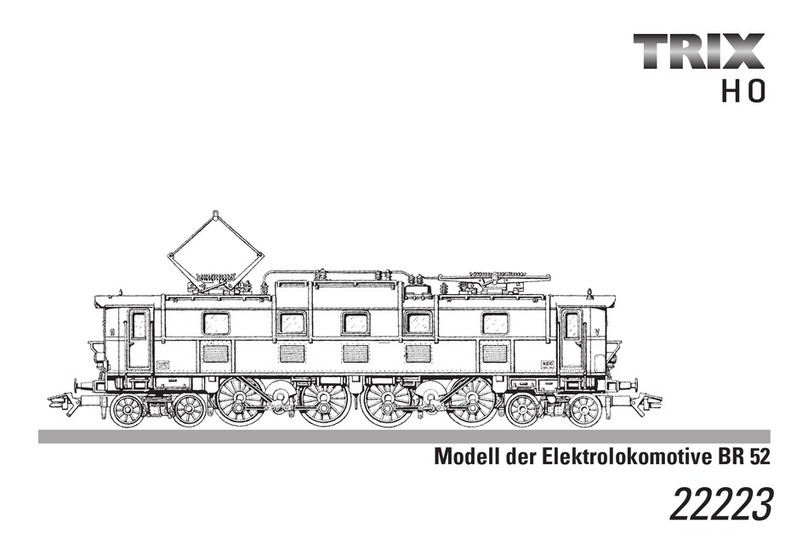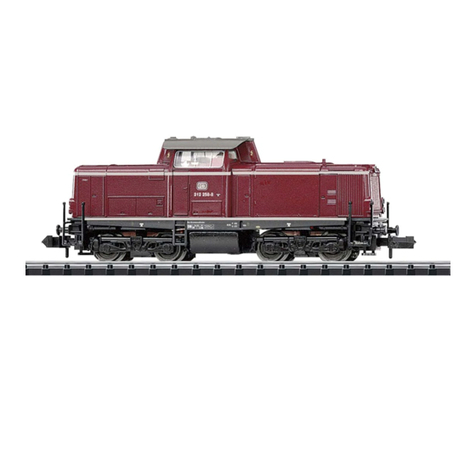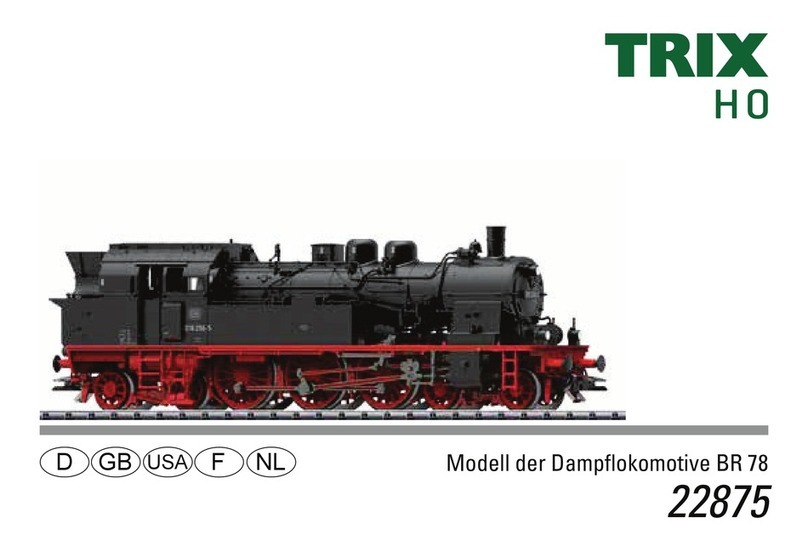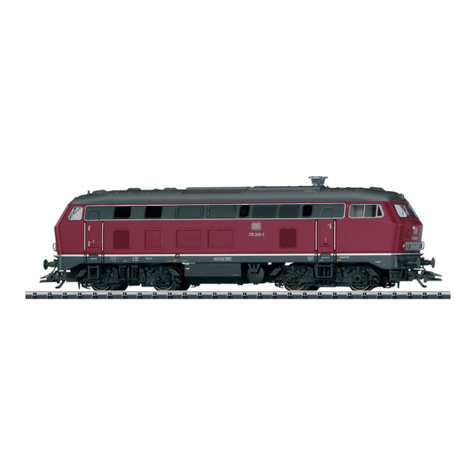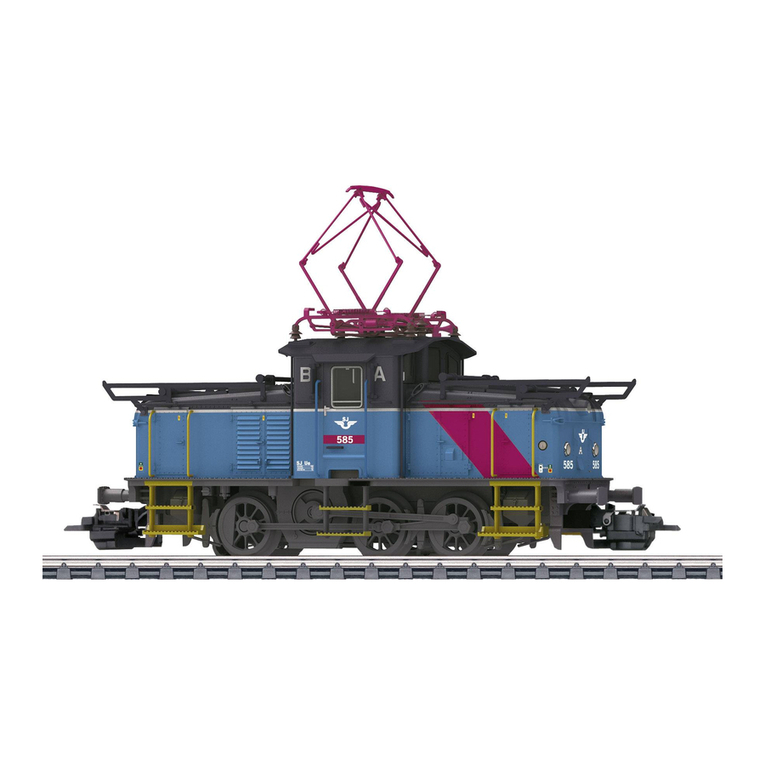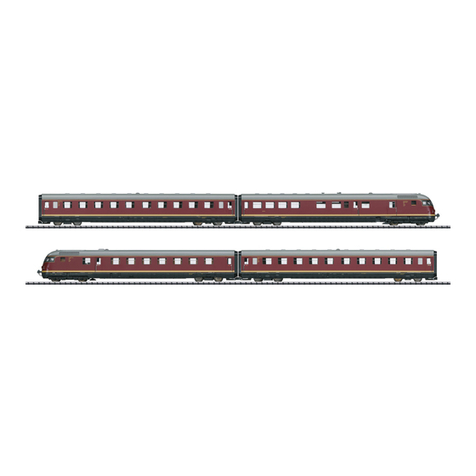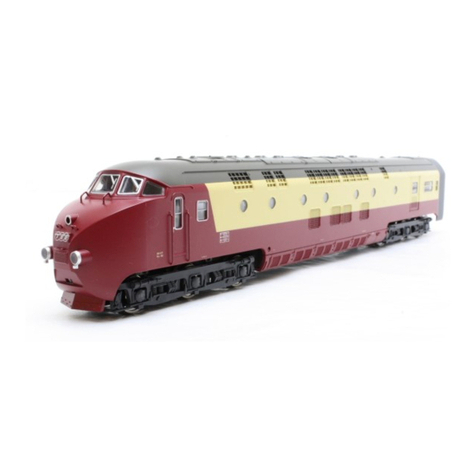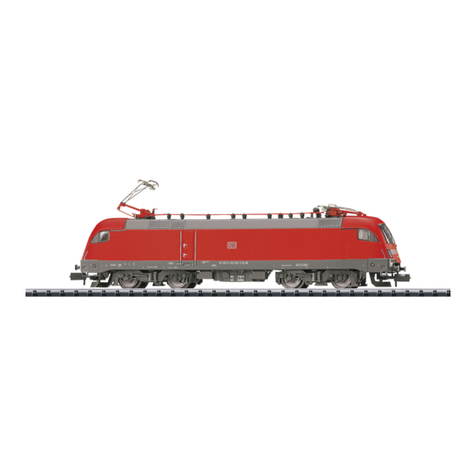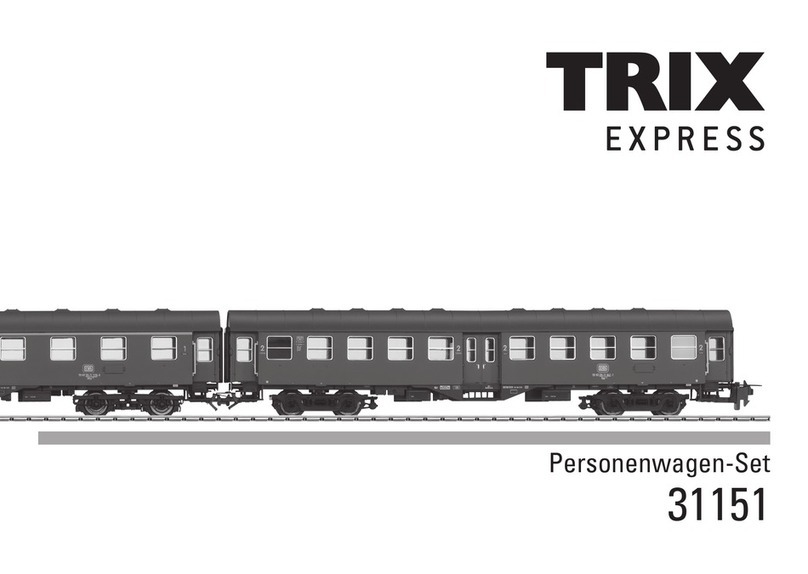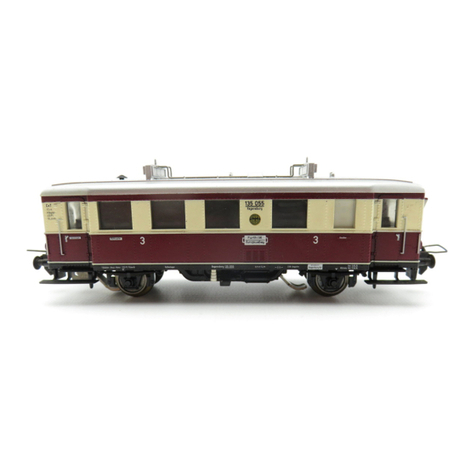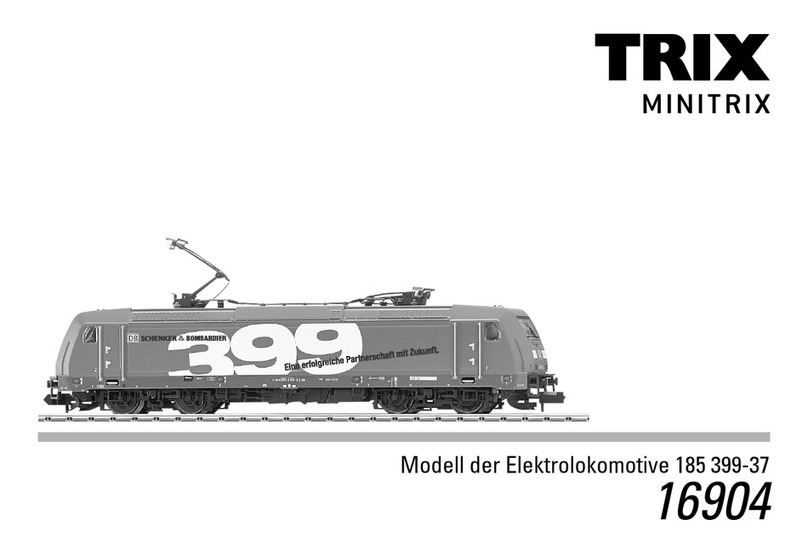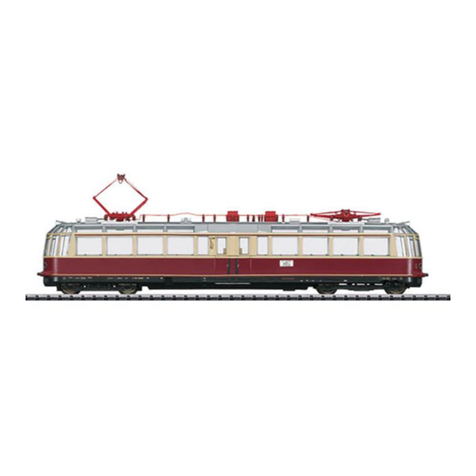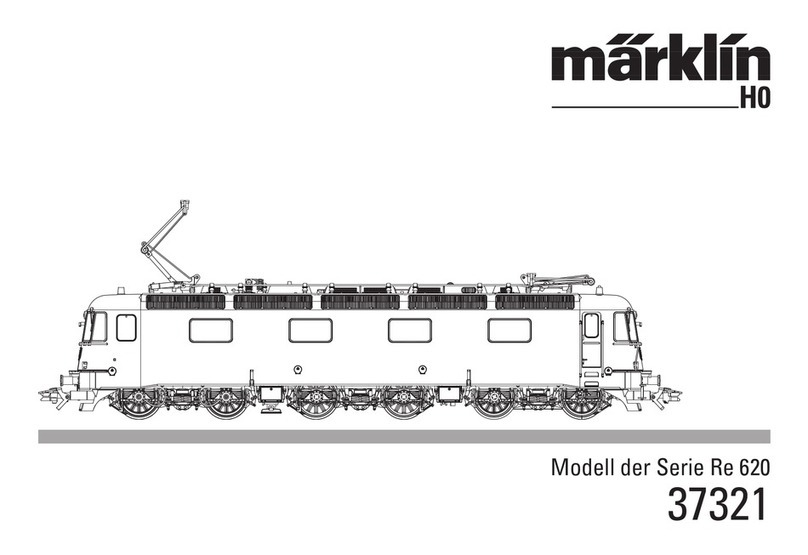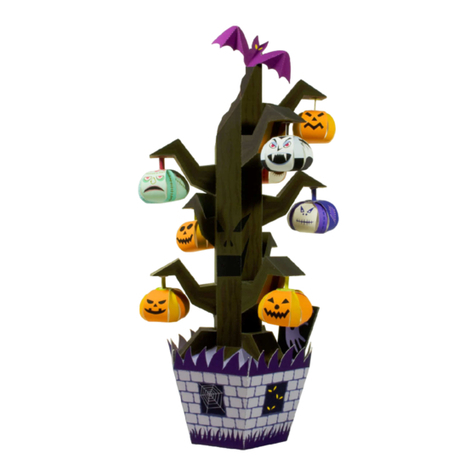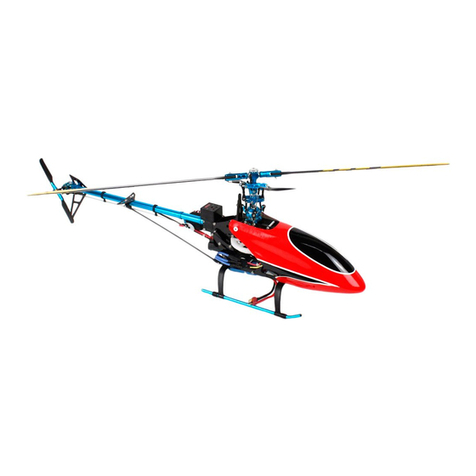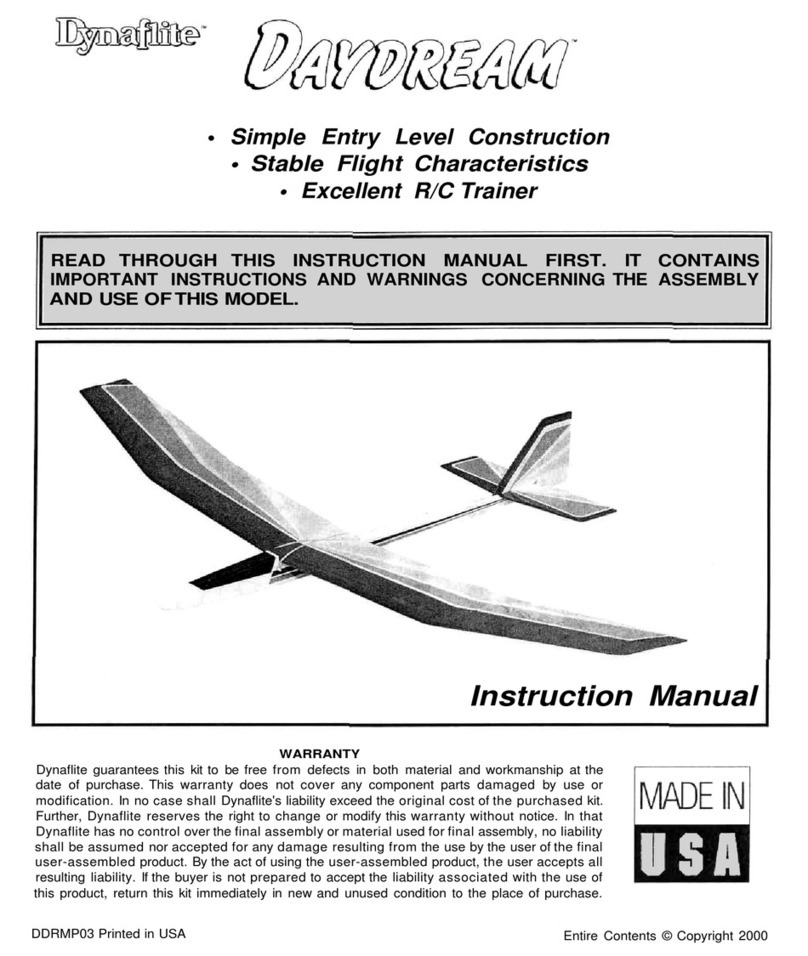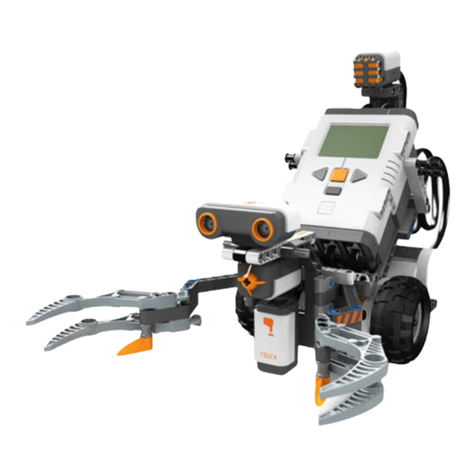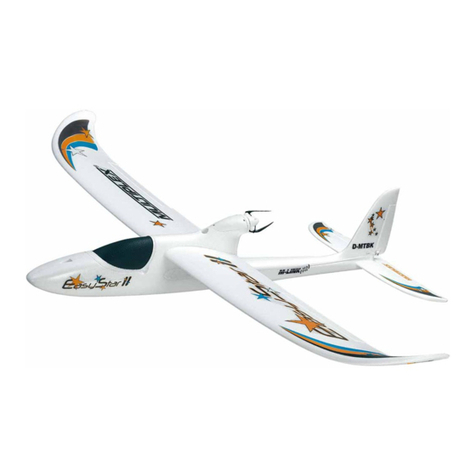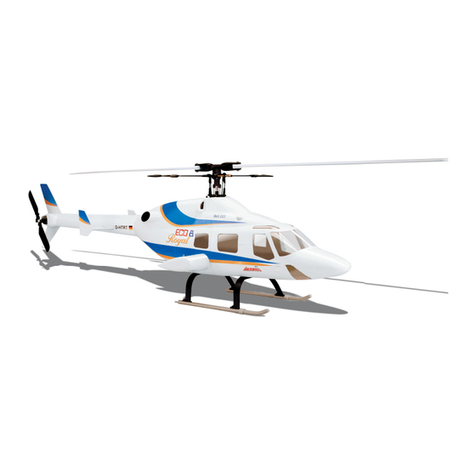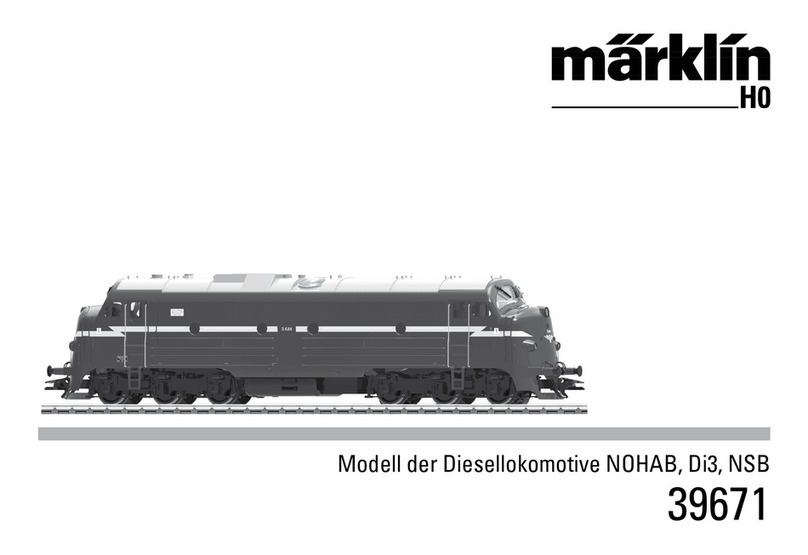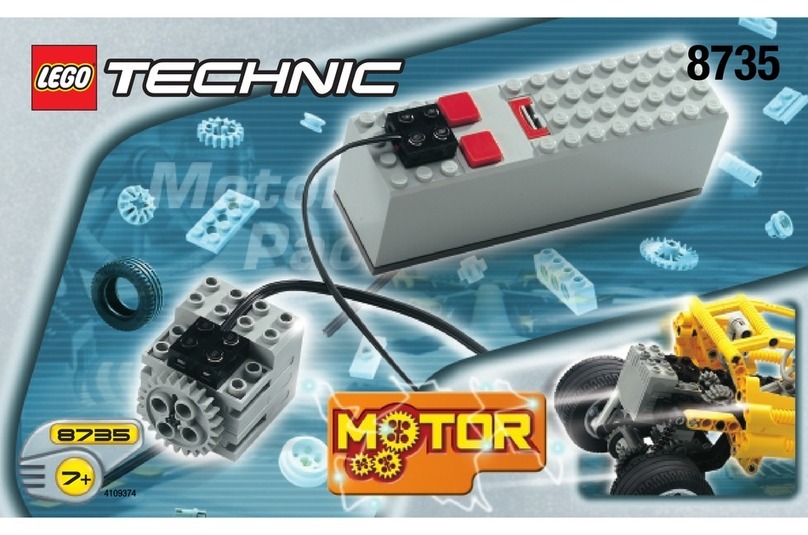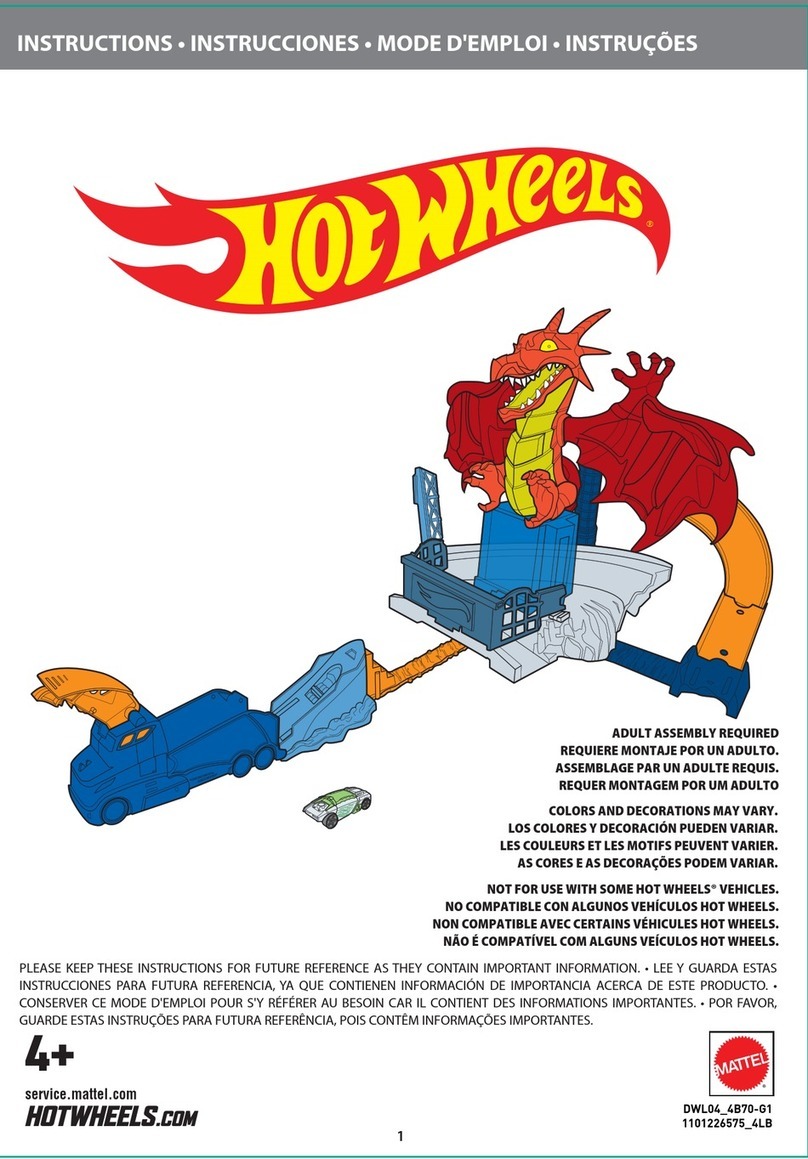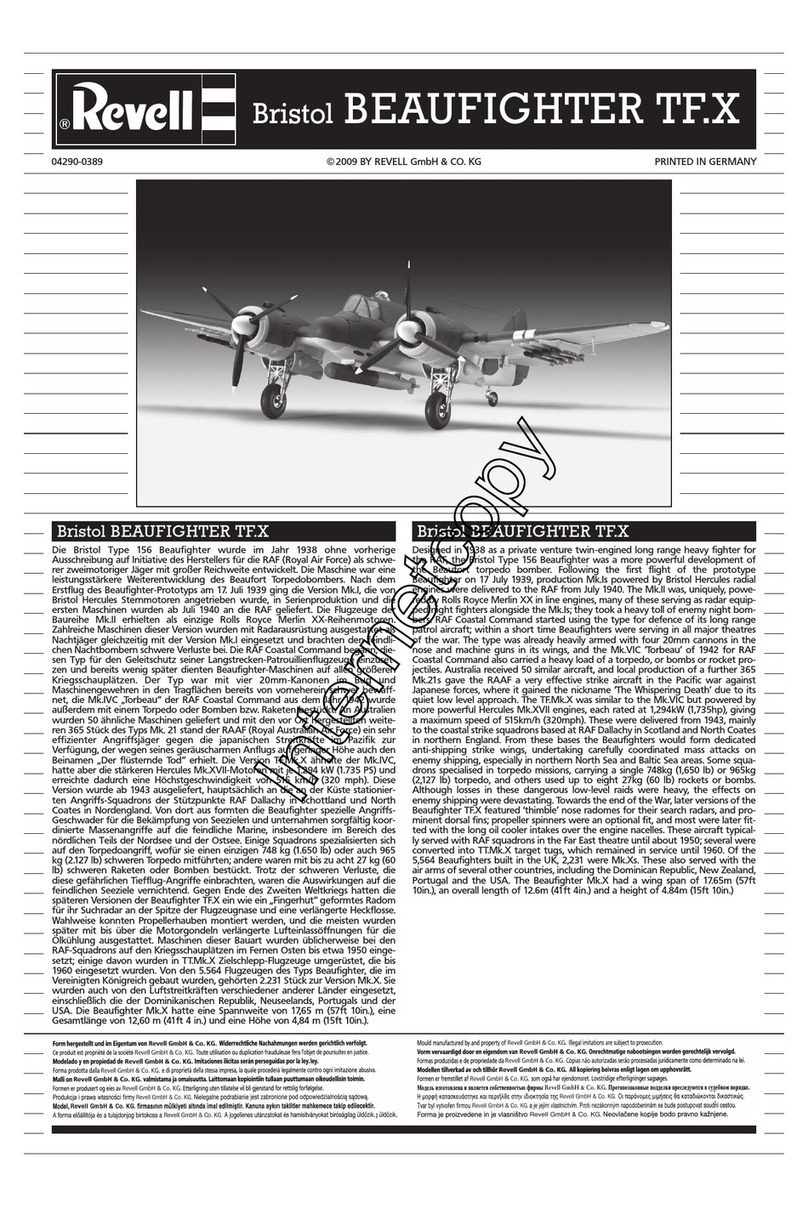4
Informatie van het voorbeeld
In 1950 besloot de Deutsche Bundesbahn tot de dringende moder-
nisering van het voertuigenpark met de aanschaf van elektrische
locomotieven met overwegend gestandaardiseerde onderdelen
en droeg alle belangrijke locomotieffabrieken op de betreffende
voorstellen uit te werken.
Vanaf 1956 tot 1971 werden in totaal 451 locs van de serie E 41
aangeschaft. Die moest voor meerdere decennia niet alleen
het buurtverkeer in de Alpen maximaal bedienen. Men kan de
geslaagde constructie als een universele locomotief aanduiden,
omdat ze in haar lange inzettijd, ongeveer alles trok wat er maar
aan treinverkeer bestaat. Haar basisopdracht bleef het buurt-
verkeer, voornamelijk in het keertreinbedrijf met Silberlingen.
Vanwege de geëiste geringere asdruk die over twee tweeassige
draaistellen verdeeld werd, kon de E 41 probleemloos op de
geëlektrificeerde zijlijnen ingezet worden.
De oliegekoelde transformator kreeg een schakelwerk op de
laagpanningskant, wat tot een voor de serie E 41 karakteristieke
geluidsontwikkeling leidde. De maximumsnelheid van de 15,62 m
lange loc bedroeg 120 km/h. Toen de Bundesbahn de maximums-
nelheid voor sneltreinen eind jaren 1950 naar 140 km/h verhoogde,
werden meer E 41 uitsluitend in de groene kleurstelling afgeleverd,
omdat het elegante blauw alleen aan snelle locomotieven die voor
de lange afstand bedoeld waren, voorbehouden was.
Vanaf begin jaren 1990 werd de serie 141 steeds meer door de
serie 143 verdrongen en door de reorganisatie van het buurtver-
keer op treinstellen kromp haar bestand zienderogen.
Informations concernant la locomotive réelle
Avec l’acquisition de locomotives électriques construites essentiel-
lement à partir d’éléments standardisés, la Deutsche Bundesbahn
opta en 1950 pour la modernisation urgente de son parc traction
et chargea toutes les usines importantes de locomotives de
l’élaboration de projets correspondants.
Au total, 451 locomotives de la série E 41 furent acquises entre
1956 et 1971. Cette construction réussie ne marqua pas uni-
quement le trafic de courte distance des Alpes jusqu’à la côte
durant plusieurs décennies, mais peut être considérée comme
locomotive universelle puisque durant ses longues années de
service, elle remorqua à peu près tout ce que l’on peut rencon-
trer dans le trafic ferroviaire. Son affectation de base resta le
trafic de courte distance, essentiellement dans l’exploitation de
rames réversibles avec les voitures inox «Silberlinge». Grâce à
sa charge par essieu relativement faible, répartie sur deux bo-
gies à deux essieux, la E 41 pouvait être utilisée sans problème
sur les lignes secondaires électrifiées.
Le transformateur à bain d’huile fut doté d’un dispositif
d’encliquetage côté basse-tension ce qui généra un bruit
caractéristique pour la série E 41. La vitesse maximale de cette
locomotive de 15,62 m de long était de 120 km/h. Lorsqu’à la fin
des années 1950, la Bundesbahn augmenta la vitesse maximale
des trains rapides à 140 km/h, d’autres E 41 furent livrées
exclusivement en livrée verte, l’élégant bleu étant réservé aux
locomotives rapides pour les trains de grandes lignes.
A partir des années 1990, la série 141 fut de plus en plus évincée
par la série 143 et avec la prise en charge du trafic de courte
distance par des automotrices, l’effectif diminua à vue d’œil.

